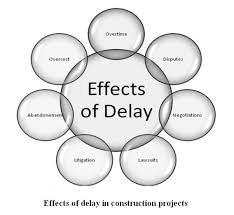Is what you’ve created a CPM schedule? Or is it a schedule with dates and activity bars?

Can you tell the difference?
First, CPM stands for Critical Path Method and is kind of a general term often used for Precedence Diagram Method, PDM schedule development.
Almost any schedule developed, using one the many current scheduling software programs, will be created based on the precedence diagram method. Most of the current scheduling software programs are set up for that.
Creating the WBS structure or summary bars and adding activities that model the work for the project in these programs will produce a schedule.
But is this really a useful schedule? Or is it a list of activities with dates assigned through the use of incomplete logic and date constraints? We get a list of activities with planned dates. That’s all we need, right? Isn’t that a schedule…?
Not really. That may be useful for conveying the basic plan for future work. But this is not a dynamic CPM schedule that can be used to model future work based on current progress, produce a Longest Path, or model the impact added or delayed work may have on future completion dates for the project.
I run into this a lot. A PM or someone on the project team will create a schedule and assume it is a CPM schedule. There are a few requirements to meet before a schedule can be considered a true CPM schedule.
Listed below are the minimum requirements for a CPM schedule.
- Calendars.
For your schedule to be reasonably accurate, calendars need to be created to allow activities to have durations based on planned work periods. This usually requires the development and use of multiple calendars to account for various work periods such as 5-day 8-hour workweeks; 4-day 10-hour workweeks; workweeks with specific holidays set as non-workdays; anticipated non-workdays due to anticipated weather impacts….
- Logic.
The only activity without a predecessor should be the first activity in the schedule. Usually NTP. The only activity without a successor should be the last activity, usually Project Complete or CCD… To be a true CPM schedule, all activity dates should be driven by the predecessor activities durations and logic. Having only all the predecessors assigned is not enough. There must be activities that are driven by the start or finish of a predecessor activity. If the activity in fact, does not drive the start of any work except the end of the project, then the successor should the last activity.
- Constraints.
There are valid uses for date constraints in any schedule. However, overuse creates multiple interruptions to the forward and backward passes which determine float values. This produces snippets of paths based on the types of date constraints. Just using a constraint to set a planned start date for an activity is not a valid use of a date constraint. An interim date constraint should represent an external driving force for an activity or milestone or the contractually required date for a milestone. Limiting the use of date constraints allows the activity durations and activity relationships, (logic) to drive finish dates and produce a Longest Path to the finish of the project. This gives us the Critical Path for completion of the project.
- Relationships and lags.
There valid reasons for using SS and/or FF relationships to model the planned sequencing of activities. But they should not be used in lieu of decomposing the work. Using SS and /or FF relationships should only be used to model work which will run concurrently even when the work is broken down to a reasonably small duration. Lags should not be used to model work or a waiting period. Lags are not transparent and using a lag with SS or FF relationships results in the work being modeled to start or finish based on a set time after the driving relationship has been satisfied, not on actual measurable work being complete to a specific point.
These are the most basic requirements for a CPM schedule.
The idea is to end up with a schedule that will model the impact actual progress to-date has on remaining scheduled activity dates. A CPM schedule can be used by the project team to proactively manage current schedule slippage, more accurately manage resources, and project finish dates and time-scaled cost flow.
I’m sure many of you have comments or additional insight into this subject. Please share!
I’d love to hear what you think!
Please visit https://conschmanservices.com to learn more about Construction and Schedule Management Services, LLC
Please visit my LinkedIn account to learn more about me.
Please visit my “The Blue Book” ProView.
Paul Epperson CCM, PMP, PSP, PMI-SP

 When we finish updating Actual Progress for the Schedule Update, (
When we finish updating Actual Progress for the Schedule Update, ( Does an experienced contractor really need a professional scheduler to create the baseline schedule and manage the update and revision process? Not necessarily, many projects can be scheduled using a worksheet or a simple program to model the activities and bars against a timeline.
Does an experienced contractor really need a professional scheduler to create the baseline schedule and manage the update and revision process? Not necessarily, many projects can be scheduled using a worksheet or a simple program to model the activities and bars against a timeline. I am sometimes bewildered by the reaction some owners have when they review the
I am sometimes bewildered by the reaction some owners have when they review the  Are you ever asked to develop the project baseline schedule and find out there are not any requirements for the schedule in the contract documents. It could happen…..
Are you ever asked to develop the project baseline schedule and find out there are not any requirements for the schedule in the contract documents. It could happen….. As I start working with new clients, I seek to understand how I can best help them?
As I start working with new clients, I seek to understand how I can best help them? All projects run into change orders with time extensions and just plain old delay claims.
All projects run into change orders with time extensions and just plain old delay claims.